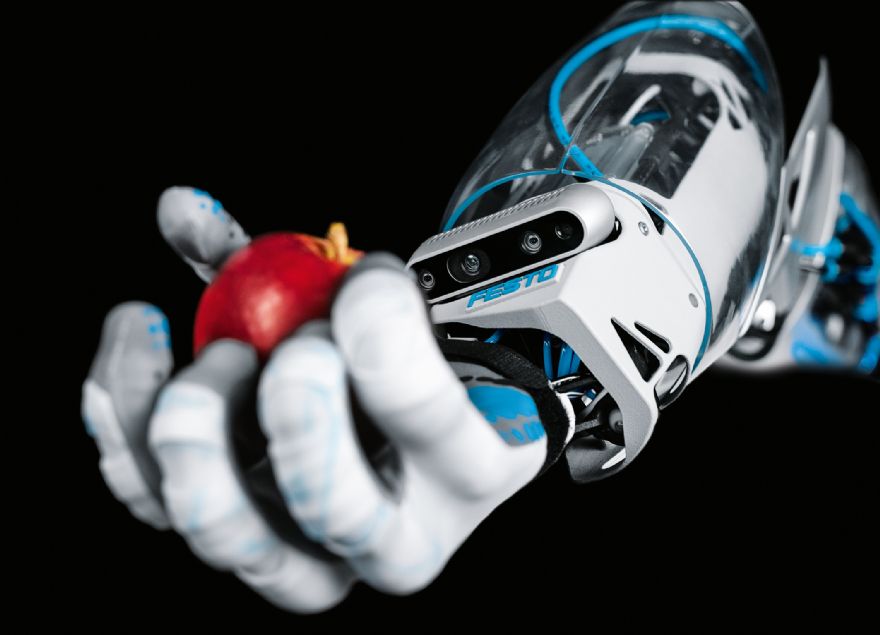
Within its ‘Bionic Learning Network’, Germany-based
Festo has been studying and developing safe automation systems designed to relieve people of monotonous or hazardous tasks.
The company’s Bionic Mobile Assistant is a prototype robot system that uses artificial intelligence to move independently, identify and grip objects and adaptively work with humans.
Developed in collaboration with ETH Zurich, the entire system features a modular design that comprises three subsystems: a mobile robot; an electric robotic arm; and a pneumatic gripper — the Bionic Soft Hand 2.0, an earlier version of which was first presented by Festo in 2019.
This hand uses a combination of compact valve technology, sensors, electronics and mechanical components that have been integrated within the tightest of spaces in order to emulate the movements of a human hand.
Bionic Soft Hand 2.0 wears a tactile glove with force sensors on the fingertips, the palm and the outer sides of the robot hand.
This allows it to sense the nature of the item to be gripped, and to adapt its gripping force accordingly, just as the human hand does; and thanks to a 3-D printed wrist with 2deg of freedom, the hand can also move both back and forth as well as to the left and to the right — thereby allowing small objects to be gripped.
In addition, the hand has a ‘depth camera’ on the inside of the wrist, enabling it to visually detect the objects to be gripped. The information is processed by a neural network, which has been trained in advance with the aid of data augmentation. Once the hand has been correctly trained, it uses the intelligence gathered to assess objects.
Festo says the system could be used for differentiating good product from bad product, or used in environments where people cannot work because of hazards or restricted accessibility; this includes maintenance or repair work, data measurements or visual inspections.
“It is also possible to imagine mobile robots carrying out tasks in areas where there is an increased risk of infection: delivering medicines to hospital patients, supporting the delivery of care in old people’s homes, or ‘waving’ ultralight sterilising wands within wards.”